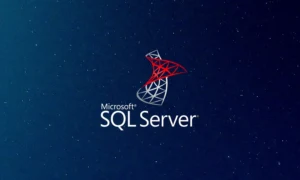Exploring the evolution of SSD price
The evolution of SSD Price has been a fascinating trend to observe over the past decade. SSDs (Solid State Drives) have become increasingly popular due to their superior performance compared to traditional hard disk drives (HDDs).
Introduction and Early Stages:
SSDs were initially introduced as high-end storage solutions, mainly targeting enterprise and professional users. When they first hit the market in the mid-2000s, SSDs were significantly more expensive than HDDs on a cost-per-gigabyte basis. This limited their adoption to specific applications where performance was critical.
Technological Advancements:
Over time, advancements in SSD technology particularly in NAND flash memory manufacturing, helped drive down production costs. This resulted in increased capacities and improved performance at more affordable prices. The transition from Single-Level Cell (SLC) to Multi-Level Cell (MLC) and later Triple-Level Cell (TLC) and Quad-Level Cell (QLC) NAND flash memory played a significant role in reducing prices.
Growing Consumer Market:
As SSD price started to decline, the consumer market began to embrace them, primarily for their performance benefits in personal computers and laptops. The increasing demand and economies of scale further contributed to price reductions. SSDs gradually became more mainstream, resulting in broader availability and competition among manufacturers.
Price Decline and Performance Improvements:
From around 2010 to 2015, the cost per gigabyte of SSD storage dropped significantly. For example, the price of a mid-range consumer-grade SSD with a capacity of 256 GB decreased from several hundred dollars to under $100 during this period. Simultaneously, SSD performance continued to improve, with faster read and write speeds and lower latency.
Transition to SATA and PCIe Interfaces:
SSDs initially used the SATA interface, which limited their performance potential. However, with the introduction of the PCIe (Peripheral Component Interconnect Express) interface, SSDs could achieve much higher speeds. While PCIe SSDs initially carried a premium price tag, prices gradually decreased as the technology matured and became more widespread.
Further Capacity Expansion:
In recent years, SSD price have continued to fall, particularly as higher-capacity drives have become more prevalent. The introduction of 1TB, 2TB, and even larger SSDs at affordable price points has allowed users to store more data on SSDs, replacing or supplementing HDDs for mass storage purposes.
Emerging Technologies:
Several emerging technologies, such as 3D NAND and the transition from TLC to QLC, have played a significant role in further reducing SSD prices. 3D NAND allows for increased storage density, while QLC NAND trades off some performance and endurance for a lower cost per gigabyte.
Benefits of Embracing Affordable SSD Price
Embracing affordable SSD price brings several benefits to users
Enhanced Performance:
SSDs offer significantly faster data access speeds compared to traditional hard disk drives (HDDs). They provide faster boot times, quicker application launches, and faster file transfers. With an SSD, you can experience smoother overall system performance, reduced loading times, and improved responsiveness.
Improved Productivity:
The faster performance of SSDs translates into increased productivity, particularly for tasks that involve data-intensive operations. Whether you’re working with large files, running resource-demanding applications, or multitasking, an SSD can handle these tasks more efficiently, reducing waiting times and allowing you to complete work faster.
Quick System Boot and Load Times:
SSDs dramatically reduce system boot times compared to HDDs. With an SSD, your computer can start up within seconds, allowing you to get to work or play without unnecessary delays. Additionally, applications load much faster, reducing the time you spend waiting for them to open.
Quiet and Reliable:
SSDs have no moving parts, unlike HDDs, which rely on spinning disks and mechanical read/write heads. This absence of moving components makes SSDs quieter and more resistant to physical shock and vibration. They are less prone to mechanical failures, providing greater reliability and longevity.
Energy Efficient:
SSDs consume less power than HDDs. Since they don’t have spinning disks, they require less energy to operate, resulting in improved battery life for laptops and lower electricity bills for desktop systems. This makes SSDs an environmentally friendly choice as well.
Compact and Lightweight:
SSDs are generally smaller and lighter than HDDs, making them ideal for portable devices like laptops, ultrabooks, and tablets. Their compact size allows for more design flexibility and thinner form factors, enabling sleeker and lighter devices without compromising on storage capacity.
Noise Reduction:
SSDs produce minimal noise compared to HDDs. The absence of mechanical components, such as spinning disks and moving read/write heads, eliminates the characteristic clicking and spinning sounds associated with HDD operation. This contributes to a quieter computing environment.
Increased Storage Capacity:
While SSDs initially offered lower capacities at higher price points, the evolution of technology has led to larger SSD capacities becoming more affordable. Now, you can find SSDs with capacities ranging from a few hundred gigabytes to multiple terabytes, allowing you to store more data, applications, and multimedia files on a fast and reliable storage medium.
The Historical Perspective: SSD Prices Over Time
Certainly! Let’s take a historical perspective on the evolution of SSD price over time:
Early Years (2000s):
When SSDs were first introduced to the market, they were considered premium products with relatively high prices. The cost per gigabyte for SSDs during this period was significantly higher compared to traditional HDDs. SSDs were primarily used in enterprise-level applications and high-performance computing systems.
The mid-2000s:
As technological advancements and increased production volumes occurred, the prices of SSDs began to decline gradually. However, they remained relatively expensive for mainstream consumers.
2010-2012:
This period saw a significant decrease in SSD prices. The cost per gigabyte started to drop rapidly, making SSDs more affordable for consumers. For example, a mid-range consumer-grade SSD with a capacity of 256 GB went from several hundred dollars to around $100 during this time.
2013-2015:
SSD price continued their downward trend, with further price reductions and more competitive offerings from various manufacturers. The cost per gigabyte continued to decrease, and SSDs with capacities of 500 GB or more became increasingly accessible to a broader range of consumers.
2016-2018:
The declining trend in SSD prices continued, and capacities started to increase even further. SSDs with 1 TB capacities became more common and affordable, with prices falling below the $200 mark. The market witnessed increased competition among manufacturers, leading to more aggressive pricing strategies.
2019-2020:
SSD prices remained relatively stable during this period, with the continued availability of affordable drives with higher capacities. The focus shifted towards improving performance and introducing faster interfaces, such as PCIe NVMe, which provided even greater speeds and responsiveness.
Recent Years (2021-2023):
SSD price have continued to decline, although the rate of decrease has slowed down compared to earlier years. The introduction of higher-capacity drives at more affordable price points has been a notable trend. Consumers can now find SSDs with capacities of 2 TB or more at competitive prices.
The Role of Capacity in SSD Prices
The capacity of an SSD plays a significant role in determining its price. Generally, as the capacity of an SSD increases, the price also tends to increase.
Cost per Gigabyte:
The cost per gigabyte (GB) is a commonly used metric to evaluate the price efficiency of storage devices. As SSD capacities increase, the cost per gigabyte tends to decrease. This means that higher-capacity SSDs offer more storage space at a relatively lower cost per unit of storage compared to lower-capacity SSDs.
Economies of Scale:
The production of higher-capacity SSDs benefits from economies of scale. As manufacturers produce larger quantities of higher-capacity drives, they can achieve better cost efficiencies in terms of manufacturing, packaging, and distribution. This often translates into more affordable prices for consumers.
NAND Flash Memory:
The cost of NAND flash memory, which is the primary component of SSDs, is a significant factor in determining SSD price. Higher-capacity SSDs require more NAND flash memory chips, contributing to higher production costs. As a result, larger-capacity SSDs are generally more expensive compared to their lower-capacity counterparts.
Technology Advances:
Technological advancements in NAND flash memory manufacturing have led to higher storage densities, allowing manufacturers to produce SSDs with larger capacities. However, newer technologies or higher-density NAND flash memory may initially carry a price premium until they become more widespread and cost-effective to produce.
Consumer Demand:
The demand for larger-capacity SSDs has been increasing as users require more storage space for applications, multimedia files, and data. Manufacturers have responded to this demand by producing higher-capacity drives, which has contributed to a wider range of options and price points in the market.
Entry-Level vs. High-Performance:
Within different capacity ranges, SSDs may be categorized as entry-level or high-performance drives. Entry-level SSDs typically offer lower prices but may have slightly lower performance or endurance compared to their high-performance counterparts. Users should consider their specific needs and balance capacity, performance, and price when choosing an SSD.
Conclusion
In conclusion, the evolution of SSD prices has been marked by significant reductions over time, making them more accessible to a broader range of users. SSDs initially entered the market as premium products with high prices, but as technology advanced, production volumes increased, and economies of scale were achieved, SSD prices began to decline.
The capacity of an SSD plays a crucial role in determining its price. Generally, higher-capacity SSDs tend to have higher prices due to factors such as the cost of NAND flash memory and production costs. However, the cost per gigabyte of SSD storage has been decreasing over time, making higher-capacity SSDs more affordable.
Embracing affordable SSD price brings numerous benefits to users. SSDs offer enhanced performance, faster boot and load times, improved productivity, reliability, energy efficiency, compactness, and noise reduction. As SSD prices have decreased, they have become a preferred choice for many users, especially for operating systems, frequently accessed applications, and tasks that require fast and efficient data access.



















